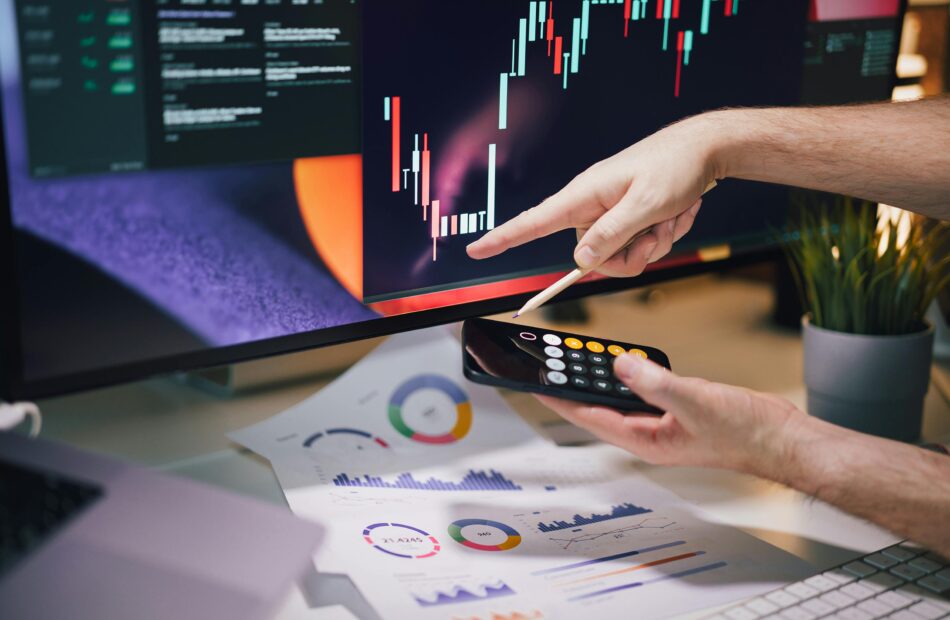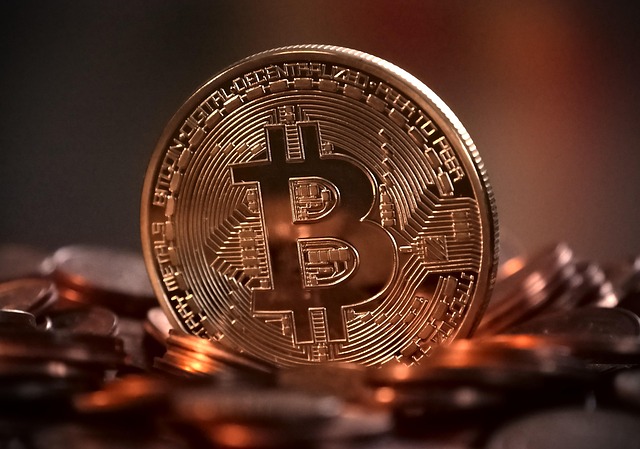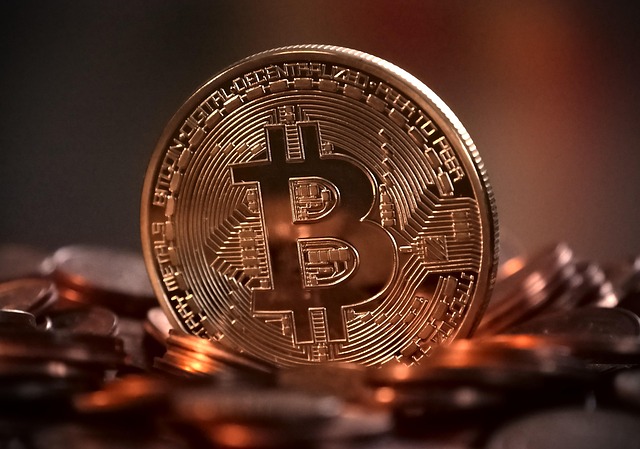XRP holds $2 support as chart pattern hints at 73% gain
XRP (XRP) stabilized near its $2 support after today’s marketwide sell-off sent the altcoin and several other cryptocurrencies close to their swing lows. Data now shows the XRP/USD pair exhibiting early signs of a bullish breakout. Ripple’s RLUSD integration could boost XRP priceRipple’s integration of its RLUSD stablecoin into its cross-border payments system, Ripple Payments, could significantly boost XRP’s price by enhancing its utility and liquidity. On April 2, Ripple, the company behind XRP, announced that it had integrated its stablecoin into the company’s cross-border payments system to boost adoption for Ripple USD (RLUSD).RLUSD, a USD-pegged stablecoin launched in December 2024, complements XRP by providing stability for transactions, while XRP serves as a fast, liquid bridge currency. This dual-asset strategy targets the $230 billion cross-border payments market, and ims to increase demand for both assets. Source: X / RippleRLUSD’s market cap now stands at $244 million, with 87% growth in March alone, according to data from rwa.xyz. As adoption grows, financial institutions using Ripple Payments may rely more on XRP for liquidity, especially in volatile corridors. Pairing RLUSD with XRP on the XRP Ledger (XRPL) and exchanges could drive trading volume and activity on XRPL’s decentralized exchange, tightening XRP’s supply. Positive sentiment from RLUSD’s success could also lift XRP’s value, with analysts suggesting increased adoption might push XRP toward $3.50 or higher.“Ripple’s $RLUSD integration is a pivotal move for cross-border payments,” said crypto market insights provider Alva in an April 3 post on X.As a result, “optimism around $RLUSD soaring, with eyes on its ripple effect on XRP,” Alva said, adding:“Overall: A solid play for strengthening Ripple’s ecosystem and pushing stablecoin adoption forward. Get ready for potential shifts!”Related: How many US dollars does XRP transfer per day?XRP pattern points to $3.51 targetXRP’s price action between Jan. 16 and April 3 has led to the formation of a symmetrical triangle pattern on the daily chart. The price is retesting the lower trendline of the triangle at $1.98, suggesting that a rebound could be in the making.Note that the price has successfully rebounded from this trendline two to three times in the past, with each retest leading to a significant price recovery.If a similar scenario plays out, XRP could recover from current levels and with good volumes, it may break above the triangle’s descending trendline at $2.40 (embraced by the 50-day SMA).The target is set by the distance between the triangle’s lowest and highest points, which would bring XRP price to $3.51, an approximate 73% gain from the current price.XRP/USD daily chart. Source: Cointelegraph/TradingViewSeveral analysts also share similar bullish outlooks for the altcoin, citing XRP’s adoption, chart technicals and the end of Ripple’s long-standing case with the SEC as the reasons. Citing a chart similar to the one shared above, XRP investor Steph Is Crypto said the price was “heavily compressing” before a massive breakout. “This breakout will create many new millionaires!”Using Elliott Wave theory, crypto analyst Dark Defender shared an optimistic price prediction for XRP, saying that the token’s correction in the monthly timeframe “will be over within weeks.”His targets remain between $5 and $18 in the medium and long term.When #XRP hit $3.3999, we set a 5 Elliott Wave Structure and explained that XRP completed the Monthly 3rd Wave and entered into correction, Wave 4.We set the Wave 4 dip with a precision of $2.02.B is in action; we also have precise levels for B Wave. While everybody… pic.twitter.com/CVlrkaVged— Dark Defender (@DefendDark) April 2, 2025According to CasiTrades, the XRP’s relative strength index shows a bullish divergence on multiple timeframes and this signals a price bottom, and an upside target of $3.80.This article does not contain investment advice or recommendations. Every investment and trading move involves risk, and readers should conduct their own research when making a decision.
Cango sells legacy China business, goes all-in on Bitcoin mining: Report
Cango, a publicly traded Chinese conglomerate, has agreed to sell its legacy China operations to an entity associated with peer Bitmain in a bid to go all-in on Bitcoin (BTC) mining, according to a report by The Miner Mag. Cango agreed to sell its legacy Chinese auto financing business to Ursalpha Digital Limited in a $352 million deal, according to the report. Additionally, Bitmain is reportedly transferring 32 exahashes per second (EH/s) to Cango. The deal effectively brings Bitmain’s mining assets to the public market, The Miner Mag said.Exahashes measure a miner’s contribution to the Bitcoin network’s hashrate, the total computing power securing the network.The Miner Mag said Ursalpha Digital Limited has the same corporate address and founding director as Antalpha, an entity ultimately controlled by the chairman of Bitcoin miner Bitmain. Proxies for Cango’s shares on the NYSE are up 25% this month. Source: Google FinanceRelated: Analysts eye Bitcoin miners’ AI, chip sales ahead of Q4 earningsTrump-family connectionBitmain has experienced US scrutiny after the country blacklisted its artificial intelligence affiliate Sopghgo, Bloomberg reported. According to Bloomberg, Bitmain has a working relationship with American Bitcoin, a Trump-family-affiliated mining entity created in March as part of a deal with Hut 8, a provider of power and computing infrastructure. On March 31, Hut 8 bought a majority ownership interest in American Bitcoin (formerly American Data Centers), whose founders include US President Donald Trump’s sons, Donald Trump Jr. and Eric Trump. Hut 8 has transferred its Bitcoin mining equipment to American Bitcoin, which is reportedly mulling an initial public offering (IPO), according to Bloomberg. The companies said that American Bitcoin will focus on crypto mining, while Hut 8 targets data center infrastructure for applications such as high-performance computing. In 2025, Bitcoin mining stocks have struggled amid declining cryptocurrency prices and pressure on business models caused by the Bitcoin network’s April halving, according to a JPMorgan research note shared with Cointelegraph.Every four years, the amount of BTC mined per “block” — a bundle of transaction data stored on the chain — is cut in half. April’s halving slashed mining rewards from 6.25 BTC to 3.125 BTC per block.Magazine: Elon Musk’s plan to run government on blockchain faces uphill battle
Bitcoiner speculates ‘massive’ bot spam briefly took down Bitcoin mailing list
One of Bitcoin’s key communication tools used to discuss potential protocol changes was knocked out for several hours starting on April 2, with one moderator speculating it may have been a targeted attack assisted by bots. For several hours across April 2 and 3, Bitcoin core developers and researchers were unable to interact on Google Groups after Google banned the group for spam. “Bitcoin Development Mailing List has been identified as containing spam, malware, or other malicious content,” Google’s warning stated at the time.The Bitcoin Development Mailing List’s warning before the ban was lifted. Source: GoogleBitcoin Core developer Bryan Bishop told Cointelegraph that the ban may have been triggered by individuals or bots mass-reporting the Bitcoin mailing list from multiple accounts.It’s a common tactic by attackers looking to ban or censor a community, Bishop said, noting that similar incidents occur on YouTube, X and TikTok fairly often.“So it’s possible that this whole thing might have been triggered through something like that. It might have just been someone clicking those links on a massive scale to report it.”Google Workspace Support’s X account confirmed that the issue had been resolved on April 3 at 2:23 am UTC in response to one of the Bitcoin mailing list’s other moderators, Ruben Somsen.Bitcoin advocate and head of Block Inc, Jack Dorsey, also called attention to the ban, urging Google CEO Sundar Pichai to investigate the issue.Related: Bitcoin creator Satoshi Nakamoto may be wealthier than Bill GatesMailing lists typically involve one moderator email sending information to subscribers in a group to discuss and collaborate on a topic or shared interest.The Bitcoin mailing list is used by Bitcoin core developers and researchers to discuss potential protocol changes to Bitcoin, which secures more than $1.6 trillion worth of value for network users around the world.It has become one of the main Bitcoin mailing lists since the network’s pseudonymous creator, Satoshi Nakamoto, shared Bitcoin’s white paper on the Cryptography Mailing List on Oct. 31, 2008.Bitcoin mailing list moderators plan to stay on Google GroupsDespite the incident, Bishop said the Bitcoin mailing list moderators have no intention of moving away from communicating via email:“The reality of the situation is that this particular mailing list has always been email, and so the contributors that discuss Bitcoin protocol development through email, in order to provide continuity of service, you have to replace it with email.”The Bitcoin mailing list officially migrated to Google Groups in February 2024. Source: Bryan BishopBefore that, the mailing list was hosted on the Linux Foundation, Oregon State University Open Source Lab’s infrastructure and SourceForge.net.Bishop suggested that a Bitcoin forum shouldn’t be limited to one particular platform, pointing out that there are several other platforms where Bitcoin developments are discussed, including GitHub and the decentralized social network Nostr.Magazine: 10 crypto theories that missed as badly as ‘Peter Todd is Satoshi’
Elon Musk’s Neuralink seeks patients globally to try its brain chips
Elon Musk’s computer-chip brain implant company Neuralink is seeking patients all around the world to trial its device that allows one’s thoughts to control a computer.Neuralink is looking for people with quadriplegia — those who are not able to use their arms or legs — to sign up for a clinical trial, it said in an April 2 post on X, the social media platform also owned by Musk.As of January, Neuralink has said three patients have been implanted with a device. All are quadriplegic and are testing a small brain implant that tracks neural activity to control a computer or smartphone as part of a clinical trial called the Precise Robotically Implanted Brain-Computer Interface, or PRIME study.Neuralink is one of several companies and academic institutions developing and testing so-called brain-computer interfaces, which vary from small wire-like implants as part of clinical trials to non-invasive devices akin to a hat.Source: NeuralinkNeuralink’s website says its clinical PRIME study, which will take around six years, is looking for quadriplegics with spinal cord injury or amyotrophic lateral sclerosis to use their thoughts to control a computer.Musk also heads vehicle maker Tesla and is the Trump administration’s government cost-cutting czar. He has said he wants Neuralink to move beyond just allowing humans to operate computers by thinking and wants to help “give people superpowers.”First Neuralink patient reports no side effects after a yearNoland Arbaugh, Neuralink’s first patient, said in a March 28 X post that he’s “had no negative side effects, neither physically nor psychologically” in the year after receiving his brain implant. Arbaugh, a quadriplegic, demoed his brain chip about a year ago by controlling a computer cursor to play chess and surf the web.Arbaugh said he’s now using his brain chip “for all sorts of things” and guessed he’s using it for over 10 hours a day.Related: SpaceX flight bankrolled by crypto investor launches first manned polar orbitHe said the company’s researchers were “figuring out how to control a wheelchair with the implant,” which he added he won’t use “unless it’s next to perfect. I think it benefits everyone if I don’t lose control and drive into traffic.”Arbaugh said he had found work as a traveling keynote speaker, which he attributed to Neuralink’s implant, which helped him write, research, and communicate online.“I can’t tell you how much hope and purpose this technology has provided me,” he wrote. “It’s only a matter of time before the implant is in dozens, then hundreds, then thousands of people.”Magazine: Crypto fans are obsessed with longevity and biohacking — Here’s why
West Virginia's BTC reserve bill is 'freedom' from a CBDC — State Senator
West Virginia’s Bitcoin (BTC) strategic reserve bill would give the state more sovereignty from the federal government and freedom from a potential central bank digital currency (CBDC), State Senator Chris Rose told Cointelegraph in an exclusive interview.“You hear these rumors that there are people at the federal government that will want to have a central bank digital currency,” Rose said. “And people don’t want that. People want decentralized currency. They want freedom.”The bill, introduced in February, seeks to allow the state treasury to invest up to 10% of public funds in precious metals like gold and silver, stablecoins, or any digital asset that has had a $750 million market capitalization or higher over the last 12 months. Currently, the only digital asset with such a market cap is Bitcoin.West Virginia State Senator Chris Rose. Source: CointelegraphRose, the bill’s sponsor, said that the reason they decided on the market cap requirement was to allow the state to have exposure to cryptocurrency, but not to get trapped “in any things like memecoins.”Adopting Bitcoin on the state level would “give us a little more state sovereignty,” Rose added. “And I think that’s one reason why you see a lot of people who normally buy [Bitcoin] for themselves want to see their state government do the same.”He added that a 10% allocation of state funds would be a “good way to introduce [Bitcoin] to the state” while avoiding any fear from people who don’t understand digital assets. “It’s a good way to cap that where they feel comfortable, but also give us at least a decent exposure as well.”Bitcoin: “a very powerful” investment and freedom toolRose said that one of the roadblocks to getting the bill passed is fear, in particular among those who don’t understand cryptocurrency. “Just like any other state, we have people who understand it. We also have people that don’t understand it, and people are always afraid of what they don’t know.”He added that “once they understand it, they realize it’s a very powerful investment tool and freedom tool for every one of us to adopt.”Excerpt of West Virginia Bitcoin reserve bill. Source: West Virginia LegislatureWest Virginia Governor Patrick Morrisey, who has envisioned a future state economy powered by crypto and other tech, won’t be a roadblock, Rose said. And the state treasurer, whom Rose consulted before introducing the bill, won’t either.However, according to WVNews, a West Virginia publication, some lawmakers and financial experts remain skeptical. Investing state funds into Bitcoin may be risky due to the asset’s volatility and price swings, which can cause financial instability and make Bitcoin a controversial choice for state investments.Although Bitcoin strategic reserve bills have been popping up in state legislatures around the United States, some bills have failed to pass or have scrapped key provisions, including some of those in traditionally conservative states.Currently, 47 strategic Bitcoin reserve bills have been introduced in 26 states according to Bitcoin Laws. While, in most of the states, the bills have only been introduced or referred to committees, some have made headway in three: Arizona, Oklahoma, and Texas.Related: Texas Senate passes Bitcoin strategic reserve billRose clarified that the 10% of state funds allocated to precious metals, stablecoins, or Bitcoin would be sourced from two key areas.“It would be the assets under the pensions fund and under the severance tax fund,” Rose said. “They would be able to divest some of those ETF funds into these assets. We wanted to keep it separate from the petty cash fund, which is day-to-day, just paying the bills of the state. We wanted to keep it to our longer-term assets,” he added.Magazine: X Hall of Flame, Benjamin Cowen: Bitcoin dominance will fall in 2025
HBAR Foundation joins OnlyFans founder startup to bid on TikTok
The popular video-sharing app TikTok has been making headlines recently as various companies and organizations have been vying to purchase it. The latest contenders in this race are the HBAR Foundation and Zoop, a social app created by OnlyFans founder Tim Stokely.
According to a recent report by Reuters, the HBAR Foundation and Zoop have submitted a bid to purchase TikTok in the United States. This bid comes after other major technology companies, such as Amazon, Oracle, Microsoft, and Rumble, have also expressed interest in acquiring the app.
The bid from the HBAR Foundation and Zoop is not just about changing ownership, but also about creating a new paradigm where both creators and their communities can directly benefit from the value they generate. This aligns with Zoop co-founder RJ Phillips’ statement that “Our bid for TikTok isn’t just about changing ownership, it’s about creating a new paradigm where both creators and their communities benefit directly from the value they generate.”
The potential sale of TikTok has been a hot topic since 2024 when the US Congress passed a bill that could potentially ban the app if it wasn’t separated from its Chinese parent company, ByteDance. The initial deadline for the sale was Jan. 19, but President Donald Trump signed a 75-day extension, pushing the potential sale until April 5.
The HBAR Foundation and Zoop’s bid is a late-stage one, and it remains to be seen if it will be successful. Cointelegraph reached out to both parties for comment but did not receive a response at the time of publication.
This is a developing story, and more information will be added as it becomes available. Stay tuned for updates on the potential sale of TikTok and its impact on the social media landscape.
FDUSD stablecoin depegs following insolvency claims by Justin Sun
The First Digital US dollar-pegged stablecoin (FDUSD) depegged on April 2 following claims of insolvency from Tron network founder Justin Sun, who said that the issuer of the tokenized fiat equivalent, First Digital, is insolvent.First Digital responded to the claims by assuring users they are completely solvent and said that FDUSD is still fully backed and redeemable with the US dollar on a 1:1 basis.The firm also said that the ongoing dispute is with TrueUSD (TUSD), another stablecoin. The firm wrote in an April 2 X post:”Every dollar backing FDUSD is completely secure, safe, and accounted for with US-backed Treasury Bills. The exact ISIN numbers of all of the reserves of FDUSD are set out in our attestation report and clearly accounted for.”First Digital also indicated they would be taking legal action against Sun for making the claims on social media. “This is a typical Justin Sun smear campaign to try to attack a competitor to his business,” spokespeople for First Digital wrote.FDUSD loses dollar peg: Source: CoinMarketCapRelated: SMBC, Ava Labs, Fireblocks sign MoU for stablecoin framework in JapanProof of reserves: the answer to FUD, runs on the bank, and depegging?Proof-of-reserve audits are onchain cryptographic verifications that a custodian, crypto firm, or stablecoin issuer has the digital assets it claims to hold.These proof-of-reserve audits use zero-knowledge tech and Merkle Trees — a data structure used to verify onchain information — as an alternative to audit reports or attestations widely used in the crypto industry.Despite proof-of-reserve technology not yet tracking liabilities against reserves, the system promises to be better than the current system of audits that do not use real-time, onchain data.First Digital’s audit report of reserves as of Feb. 28, 2025. Source: First DigitalTal Zackon, founder of the Tres Finance auditing and reporting platform, previously told Cointelegraph that current attestations and third-party audit reports only represent “snapshots” of reserves that can be manipulated, exploited, or misconstrued.Stablecoin issuers will likely need to adopt proof-of-reserve tools as the tokenized fiat equivalents become more integrated into global capital markets and critical financial infrastructure such as stock exchanges, escrow services, and clearinghouses.This integration will require stablecoin issuers to provide up-to-date, real-time data, which may need to be updated several times per minute as opposed to the monthly audit reports that are typically released by firms to attest to asset reserves.Magazine: Justin Sun reignites HTX feud, India reconsiders crypto hate: Asia Express
Bitcoin sales at $109K all-time high 'significantly below' cycle tops — Research
Bitcoin investors who entered the market in 2020 or later are still holding onto their BTC despite the recent surge in prices, according to new research from onchain analytics firm Glassnode. The study, published on April 1, revealed that even at a price of $110,000, many hodlers are not willing to sell.
The data, gathered from Glassnode’s Realized Cap HODL Waves metric, shows that investors who bought BTC between three and five years ago are still holding onto their coins. This group includes those who bought at the 2020 lows of $3,600 and the 2021 highs of $69,000.
While the share of wealth held by these investors has declined slightly since the peak in November 2024, it remains at historically high levels. This suggests that the majority of investors who entered the market between 2020 and 2022 are still holding onto their BTC.
In contrast, the data also shows that over two-thirds of those who bought BTC five to seven years ago have already sold their positions. This reflects their lower cost basis compared to the more recent buyers.
Glassnode also noted that current short-term holders (STHs), who are more speculative investors, have been more sensitive to recent price volatility. However, their participation in the market does not suggest a speculative frenzy, as seen in previous BTC price cycles.
The data shows that STHs currently hold around 40% of Bitcoin’s network wealth, which is significantly lower than previous cycle tops where new investor wealth peaked at 70-90%. This indicates a more tempered and distributed bull market so far.
Overall, the data suggests that Bitcoin investors are holding onto their coins for the long term, even as prices continue to rise. This is in contrast to previous cycles where investors were more likely to sell at higher prices.
It’s important to note that this article does not contain investment advice or recommendations. Every investment and trading move involves risk, and readers should conduct their own research before making any decisions.
Bitcoin’s quantum-resistant hard fork is inevitable — It’s the only chance to fix node incentives
Opinion by: Dr. Michael Tabone, senior economist for CointelegraphBitcoin (BTC) has long been hailed as unbreakable and untouchable, a digital stronghold against the forces of change. Bitcoin’s bedrock of security is facing its first true test with quantum computing, which should be addressed sooner rather than later. Its cryptographic armor will crack if not addressed, forcing the network to adapt or perish.Bitcoin’s node count is growing, but incentives are still absentBitcoin’s full node network has grown over time, a sign of increasing adoption and a more robust infrastructure, but the core issue remains. The voluntary act of running a node still has no financial incentive. Miners earn rewards for securing the network, yet full node operators get nothing for their role in keeping Bitcoin decentralized.At the same time, a significant portion of these nodes are run by exchanges, custodians and large mining pools. These are centralized entities with financial incentives to maintain control. Suppose Bitcoin’s node network continues to expand without proper incentives. In that case, the risk remains that validation will become increasingly dependent on a few well-funded players rather than a truly distributed base of individual users (see Figure 1).FBitcoin node operation has increased by only 15,605 in 8 years. Source: Bitnodes.io All of this comes as running a Bitcoin node has never been easier. Plug-and-play solutions like Umbrel, Start9, RaspiBlitz, Cubit and Ronin Dojo allow anyone to set up a full node on low-cost hardware with minimal technical knowledge. These tools have lowered the barrier to entry, making node operation more accessible than ever before.Yet adoption remains stagnant. Despite the ease of setup, most Bitcoin users still do not run their own nodes. The reason is simple: There is no financial incentive to do so.Recent: Decentralization is in danger — We can fix itUnlike miners, who earn block subsidies and transaction fees for securing the network, full node operators receive nothing. They validate transactions, enforce consensus rules, and contribute to Bitcoin’s decentralization, yet their efforts go unrewarded. As a result, node operation remains an ideological commitment rather than an economically viable activity.If Bitcoin must be forked, we must use it to strengthen decentralizationCritics of the proposal argue that Bitcoin’s monetary policy should remain untouched. Others warn that introducing full node incentives could lead to Sybil attacks, where bad actors spin up thousands of fake nodes to exploit rewards. These concerns are valid — but they ignore the larger reality.Bitcoin is on the path toward a forced consensus change. The honest debate is not whether Bitcoin should change but whether we will use this moment to strengthen it. If full Bitcoin node incentives are implemented correctly, they could drive a surge in node adoption, strengthening the network’s censorship resistance and reinforcing its decentralization. This would reduce dependence on large mining pools and exchanges for validation, spreading control more evenly among individual participants. Bitcoiners will have to continue pushing to keep Bitcoin resilient against corporate influence in a post-quantum world where security and decentralization will matter more than ever in the years ahead.Poorly designed incentives could introduce risks, particularly Sybil attacks, where bad actors spin up thousands of fake nodes to exploit rewards. These challenges can be solved with the right Sybil resistance mechanisms in place. Ignoring them entirely would be far riskier than addressing them head-on.Source: Michael TaboneBitcoin’s future depends on this momentBitcoin’s greatest strength is its ability to remain decentralized and censorship-resistant. But that strength is not automatic; it requires an infrastructure that encourages broad participation.The quantum-resistant hard fork will be a once-in-a-generation event. We may not get another chance if we fail to use it to fix Bitcoin’s broken incentive structure. Bitcoin’s future depends on getting this moment right.This conversation should continue, but you should have some skin in the game and run a node yourself first. Opinion by: Dr. Michael Tabone, senior economist for Cointelegraph.This article is for general information purposes and is not intended to be and should not be taken as legal or investment advice. The views, thoughts, and opinions expressed here are the author’s alone and do not necessarily reflect or represent the views and opinions of Cointelegraph.
Metaplanet adds $67M in Bitcoin following 10-to-1 stock split
Metaplanet, a Japan-based company, has recently made a significant investment in Bitcoin, purchasing 696 BTC for 10.152 billion yen ($67 million). This brings their total Bitcoin holdings to 4,046 BTC, valued at over $341 million at the time of writing.
The company, often referred to as “Asia’s MicroStrategy,” has been actively accumulating Bitcoin as part of their strategy to lead Bitcoin adoption in Japan. In fact, they have set a goal to accumulate 21,000 BTC by 2026. With their current holdings, they rank as the ninth-largest corporate Bitcoin holder globally.
This recent purchase comes shortly after Metaplanet issued 2 billion Japanese yen ($13.3 million) of bonds to buy more BTC. The company has been making strategic moves to increase their Bitcoin holdings, including a 10-to-1 reverse stock split to lower the price per trading unit and improve liquidity.
The reverse stock split was completed on March 28, and the company’s stock price has risen significantly since then. This has created a high barrier to entry for retail investors, with the minimum amount required to purchase their shares on the market now exceeding 500,000 yen. The stock split aims to address this issue and expand the firm’s investor base.
Metaplanet’s purchase also comes during a period of institutional dip buying, with Michael Saylor’s Strategy announcing their latest acquisition of 22,048 BTC for $1.92 billion. The company now holds over 528,000 BTC acquired for $35.63 billion, showing their confidence in Bitcoin despite global market uncertainty.
This uncertainty includes US President Donald Trump’s looming tariff announcement, which may create significant volatility in both crypto and traditional markets. However, institutions like Metaplanet and Strategy are still showing strong interest in Bitcoin, indicating its potential as a safe-haven asset.
In conclusion, Metaplanet’s recent Bitcoin purchase and strategic moves demonstrate their commitment to leading Bitcoin adoption in Japan. With their growing Bitcoin holdings and the support of other institutional investors, Bitcoin’s future looks promising.










